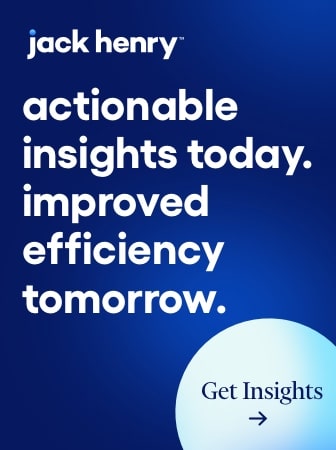In a year marked by economic uncertainties and a looming presidential election, small and mid-sized business owners across the United States are navigating a complex landscape with a mix of optimism and caution. The 2024 Bank of America Business Owner Report, a comprehensive survey of over 1,400 business owners, sheds light on their perspectives, aspirations and strategies for growth in the face of evolving challenges.
Interestingly, even amidst concerns about a bad mix of inflation, supply chain disruptions and the political environment, most business owners remain confident in their ability to increase revenues and expand their operations in the coming year.
However, this optimism is tempered by a prudent approach to hiring, funding and long-term planning as entrepreneurs seek to strike a balance between seizing opportunities and mitigating risks.
As business owners adapt to the new normal, they are increasingly turning to digital tools, sustainable practices, and personalized customer experiences to stay competitive and future-proof their enterprises. The report’s findings offer valuable insights into the resilience and ingenuity of American businesses as they chart a course through uncharted waters.
Key Takeaways:
- 55% of small business owners reported higher revenues in 2023 than in 2022, and nearly two-thirds expect their revenues to increase over the next 12 months.
- 80% of mid-sized business owners plan to expand their business, and 69% plan to hire more employees in the coming year.
- Inflation remains a top concern, with 84% of small business owners and 90% of mid-sized business owners reporting impacts on their businesses.
- Digital transformation is a key priority, with 71% of small business owners and 99% of mid-sized business owners adopting digital strategies to optimize their operations.
Why we chose it: Reports like these that come from megabanks, such as Bank of America or JPMorgan, are critical for both investors and financial institutions of all sizes to understand the ongoing, and changing, conditions of a commercial and/or consumer base. This report, which pulled on a large study of small business owners, specifically provided insights into revenue expectations, hiring plans and expansion strategies of these businesses, from which bankers can tailor their products, services, and support to better meet the evolving requirements of their clients.
What we liked about the report: The report highlighted the increasing adoption of digital tools and platforms among business owners, signaling the need for bankers to invest in and promote digital solutions that can enhance the banking experience and streamline financial operations. The report’s findings on the funding preferences and borrowing plans of small and mid-sized businesses can also help bankers anticipate demand for various financial products, such as loans, lines of credit and credit cards, enabling them to allocate resources effectively and develop targeted marketing strategies.
What we didn’t: While the report does a great job of providing healthy analysis of small business needs, a deeper dive into the geographics and demographics would make the report more valuable. More segmentation in the data would allow for a more nuanced understanding of the unique challenges and opportunities faced by different types of businesses, enabling bankers and policymakers to develop more targeted strategies and solutions.

Accelerate Time-to-Market with Rapid Implementation
Create a sustainable competitive advantage with faster time to market by drastically reducing implementation time.
Read More about Accelerate Time-to-Market with Rapid Implementation

Industry Cloud for Banking from PwC
PwC’s Industry Cloud for Banking applies our deep industry knowledge to your specific business needs.
Small vs. Mid-Sized Businesses: Where They’re At
Small business owners: Small business owners are cautiously optimistic about the future, with 55% reporting higher revenues in 2023 compared to the year before. Looking ahead, nearly two-thirds expect their revenues to increase over the next 12 months. However, given the uncertain economic landscape and upcoming presidential election, many are taking a more conservative approach to expansion, hiring, and funding. Plans to expand business, hire more employees, and obtain funding have all decreased since last spring.
Mid-sized SMBs: Mid-sized business owners are more bullish, with 80% planning to expand their business and 69% planning to hire more employees in the coming year. A vast majority (87%) believe their revenues will increase over the next year, and 84% reported higher revenues in 2023 than in 2022. Despite this optimism, mid-sized business owners remain concerned about inflation, supply chain issues, and consumer spending.
Tips and Tricks for Mitigating Inflation Woes
Inflation plagues: Inflation continues to be a top concern — third to the presidential election and the political environment — for both small and mid-sized businesses. 73% of small business owners and 67% of mid-sized business owners cite inflation as a top worry, although these numbers have decreased slightly since last spring.
To cope with the impacts of inflation, 68% of small business owners have raised prices over the past 12 months, with an average increase of 12%.
Other significant concerns include health care costs, interest rates, and commodities prices. The upcoming election is expected to impact businesses in various ways, such as increases in sales (31%), business costs (29%), and the need to raise prices (28%).
Doubling down on customer engagement: Small business owners recognize the importance of providing a unique customer experience and humanizing their brand. 82% have implemented customer engagement tactics, with personalized interactions (80%), customer feedback (48%), and direct marketing (38%) being the most popular methods. 79% proactively gather customer feedback through online review platforms, email, and in-person interactions.
Social media to supplement the work: Social media plays a crucial role in customer engagement and brand building. 65% of small business owners use social media to interact with customers, respond to comments, post about their employees, and promote upcoming sales. While nearly half (48%) ensure they create a consistent external brand, 16% acknowledge the importance of brand awareness but lack the know-how to build it effectively.

Digital Transformation, Automation & Sustainability
The pandemic has accelerated the digital transformation of small and mid-sized businesses. 71% of small business owners and 99% of mid-sized business owners have digitally optimized their operations over the past 12 months. This includes conducting business banking online, accepting cashless payments, bolstering social media presence, and implementing digital marketing strategies.
The benefits of digital tools are clear, with 49% of mid-sized business owners reporting time savings and improvements in customer satisfaction, cash flow management, organization, and customer reach. 81% of small business owners and 97% of mid-sized business owners now accept digital payments, although some small business owners remain hesitant about a completely digital payment future.
The proliferation of AI options is also seeping into the business strategies of SMBs with 37% of small business owners and 89% of mid-sized business owners saying they plan to utilize these technologies in 2024. Common applications include differentiation from competitors, streamlining payroll and bookkeeping and assisting with hiring efforts.
Sustainable business practices are gaining traction among small and mid-sized businesses. 71% of small business owners and 95% of mid-sized business owners are committed to implementing sustainable practices, driven by a desire to reduce their environmental impact and contribute to their communities. Common initiatives include minimizing paper use, recycling, limiting plastic usage, and offering hybrid work structures.
However, adopting sustainable practices comes with challenges, such as increased costs, customer frustration with higher prices, and indifference to sustainability efforts. To remain profitable, 70% of small business owners have made trade-offs, such as increasing prices, working more hours and — in some cases — reducing their own salaries.
Editor’s note: This article was prepared with AI language software and edited for clarity and accuracy by The Financial Brand editorial team.







